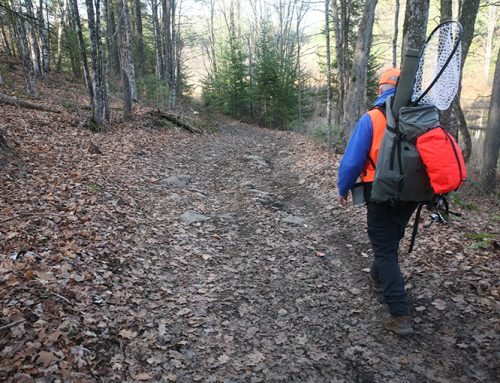
Ontario’s rare wolf species, the Eastern wolf, has been renamed and reclassified, with increased protection proposed.
On June 15, the Ministry of Natural Resources and Forestry (MNRF) announced that the Committee on the Status of Species at Risk in Ontario (COSSARO) changed the name of the eastern wolf to Algonquin wolf.
At the same time, the committee reclassified the Algonquin wolf from “special concern” to “threatened.”
The reclassification means the harvest of Algonquin wolves is now prohibited. And because the species is difficult to visually differentiate from eastern coyotes due to its similar appearance, the MNRF is proposing to prohibit hunting and trapping of wolves and coyotes in three additional core areas. (Algonquin Park and 42 surrounding townships were closed in 2004.) The proposed areas surround the Kawartha Highlands Provincial Park, Queen Elizabeth II Wildlands Provincial Park, and Killarney Provincial Park.
Mark Ryckman, Ontario Federation of Anglers and Hunters senior wildlife biologist commented, “There is insufficient evidence to show that banning the hunting and trapping of canids will have the desired effect. The MNRF’s proposal to eliminate harvest in 39 additional townships is too hasty, and may in fact do more harm than good.”
The MNRF estimates that the provincial population of Algonquin wolves is between 250 and 1,000 animals, with Algonquin Provincial Park and the surrounding townships serving as its stronghold.
More isolated populations of Algonquin wolves are found in the three areas proposed for closure, as well as in Quebec.
The proposal was posted on the Environmental Registry (www.ebr.gov.on.ca, #012-8104) on July 22, with a 30-day comment period.
Wolf hunters and trappers should check the MNRF Hunting Regulation Summary for updates.






There is no eastern wolf. The New York Times just published a very detailed DNA study showing its a hybrid -75% wolf and 25% coyote. In fact dogs are the intermediary that allowed big wolves to mate with small coyotes. Algonquin park has no wolves. Algonquin park should be called Feral Dog provincial Park until the canis soupus animals that inhabit the place, invasive species really, are all poisoned off and replaced with real timber wolves.